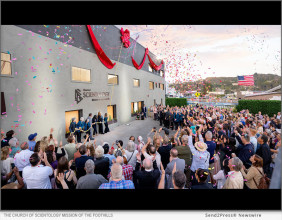New York just witnessed one of the most unexpected political upsets in recent memory.
Zohran Mamdani, a 33-year-old democratic socialist and state assemblyman, defeated former Governor Andrew Cuomo in the Democratic primary for mayor.
With his win, Mamdani is now poised to lead the most complex city government in the United States.
But what the public needs to know now is whether or not progressive politics can deliver results in power. Is Mamdani the right man for it?
A stunning upset that rewrote New York politics
The numbers alone tell a story. Mamdani secured dominant first-choice votes in districts as varied as Washington Heights, the Financial District, and parts of Brooklyn, beating Cuomo by double digits in many areas.
Even neighbourhoods that leaned toward Donald Trump in 2024 swung toward Mamdani in 2025.
Heading into the election, Cuomo was considered untouchable in New York politics.
He had everything going for him: a $25 million super PAC, endorsements from major unions and former political rivals, and years of name recognition.
Yet it wasn’t enough. Voters, especially younger ones, rejected what they saw as a comeback attempt rooted more in ego than vision.
Mamdani’s strategy was different. He ran a highly visible, ground-level campaign with over 45,000 volunteers, multilingual outreach, and an issue-driven message focused on cost-of-living problems.
He wasn’t just talking to the usual voters. He sought out Trump supporters, asked them about their frustrations, and tried to bring them into the fold.
Read also: Maybe Trump isn’t the peacemaker he thought he was
He also formed alliances, most notably with Comptroller Brad Lander, to consolidate ranked-choice votes.
What does Mamdani stand for?
Mamdani’s platform blends economic redistribution with state-led investment in public services.
He promises free childcare, free public buses, rent freezes for over a million regulated apartments, and a network of city-owned grocery stores.
He also wants to build 200,000 new affordable housing units over the next decade.
His plan is to fund these with higher taxes on New Yorkers earning over $1 million and an increase in corporate taxes.
It’s a wishlist that appeals to many voters tired of high prices, stagnant wages, and decades of ineffective city leadership. But the appeal comes with high expectations. Voters will want results, and quickly.
The most viable idea in Mamdani’s plan is universal childcare. Estimates suggest this could cost $5 billion annually.
While expensive, the program could help low-income parents reenter the workforce.
Mamdani’s team believes this would generate long-term gains for both families and the city’s economy.
The proposal has strong backing from the progressive base and moderate economists alike.
Other ideas, though, are less defensible.
Can his housing plan fix New York’s shortage?
Mamdani wants to triple the city’s output of affordable, rent-stabilized housing. On paper, that sounds bold.
But 200,000 units in 10 years is only slightly above the rate of housing production in the 2010s.
More importantly, his plan focuses on subsidized housing while sidelining market-rate construction.
A report from the NYU Furman Center shows New York builds far less housing than global peers.
Without a boost in total supply, rents will continue to rise, even if low-income renters get some relief.
Mamdani also supports a rent freeze across stabilized units.
Decades of research suggest that rent control, while helping existing tenants in the short term, reduces the incentive to build and maintain rental housing.
A study by the National Bureau of Economic Research found that rent control decreased rental supply by 15%. The result was higher rents across the broader market.
Mamdani may be trying to protect tenants, but in doing so, he risks deepening the very problem he wants to solve: not enough places to live.
Why city-owned grocery stores are unlikely to succeed
One of Mamdani’s more unusual proposals is a network of publicly run grocery stores.
His goal is to cut prices and fight food inflation by eliminating rent and profit from the equation.
But here, the economics get murky. Grocery stores already operate on margins of less than 2%.
Most food retail in New York’s poorer neighborhoods comes from independent stores small businesses often owned by immigrants.
A public competitor would be entering a market that is already competitive and fragile.
Mamdani’s stores would likely face higher costs, union rules, and procurement delays.
Economists argue that the result would be the worst of both worlds: public stores that can’t cut prices but still damage local businesses.
Is Mamdani’s vision realistic—or just rhetoric?
To his credit, Mamdani understands that good intentions are not enough. In interviews, he has said he wants to be “wedded to outcomes” and is open to any strategy that delivers results.
He’s also met privately with experienced technocrats from previous administrations, signaling a willingness to go beyond ideology.
Still, his platform remains uneven. His housing and grocery plans rely on flawed assumptions.
His transit policy that supports “free buses for all” has shown limited economic impact in recent trials and comes with the risk of disorder and reduced service quality.
Moreover, it’s not yet clear if Mamdani’s supporters will accept compromises when he enters office.
Nor is it clear whether New York’s bureaucracy and political opposition will allow him to deliver anything close to his campaign vision.
A movement faces its test
Zohran Mamdani’s rise is about more than just one race. It indicates a generational shift inside the Democratic Party and a serious challenge to centrist orthodoxy.
His success shows that democratic socialism has matured from an outsider movement into an electoral force.
But that success now enters its most difficult phase: governing.
The lesson from Chicago’s Brandon Johnson, another DSA-backed mayor, is that rhetoric collapses fast when it meets budget shortfalls and legislative resistance.
Johnson’s support has plunged, and many of his plans have stalled or failed entirely.
Mamdani will face even higher scrutiny. His supporters expect transformation. His critics expect failure. The margin for error is small.
The post Zohran Mamdani's rise as New York mayor: what’s behind his ideas and policies? appeared first on Invezz





